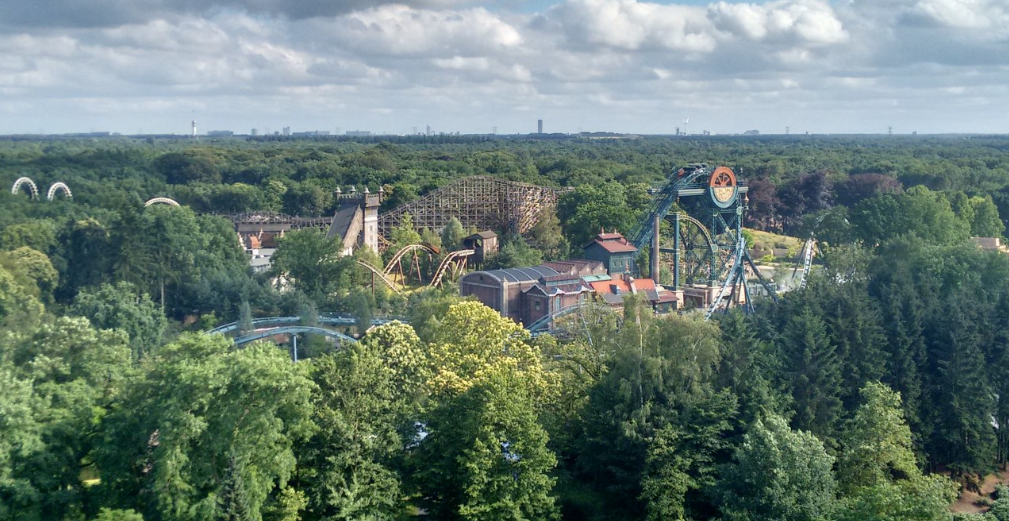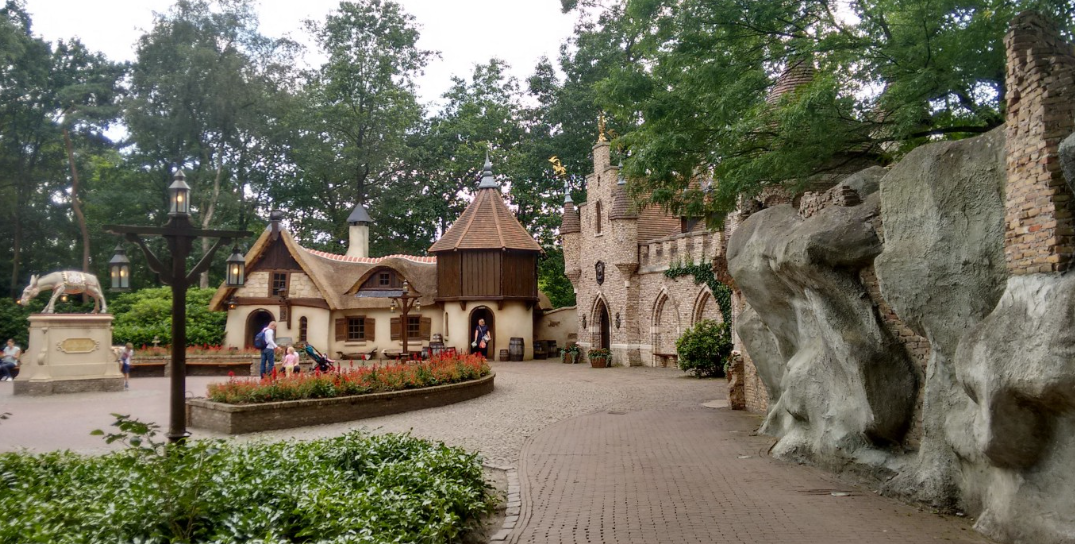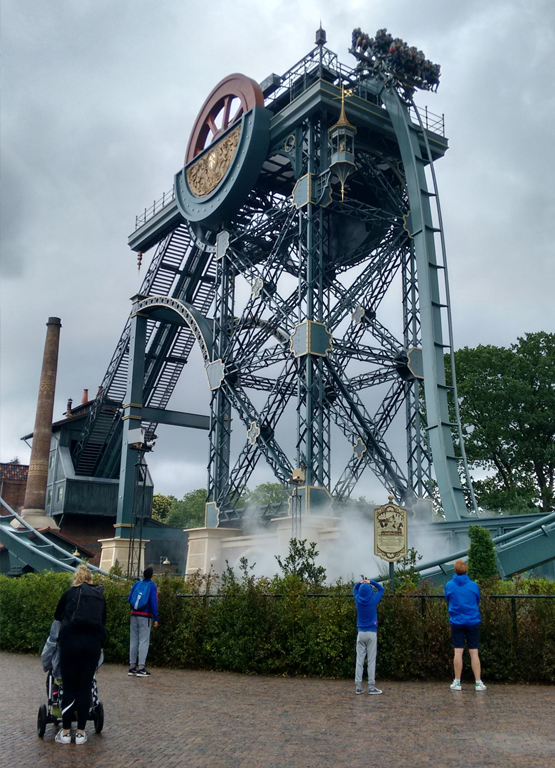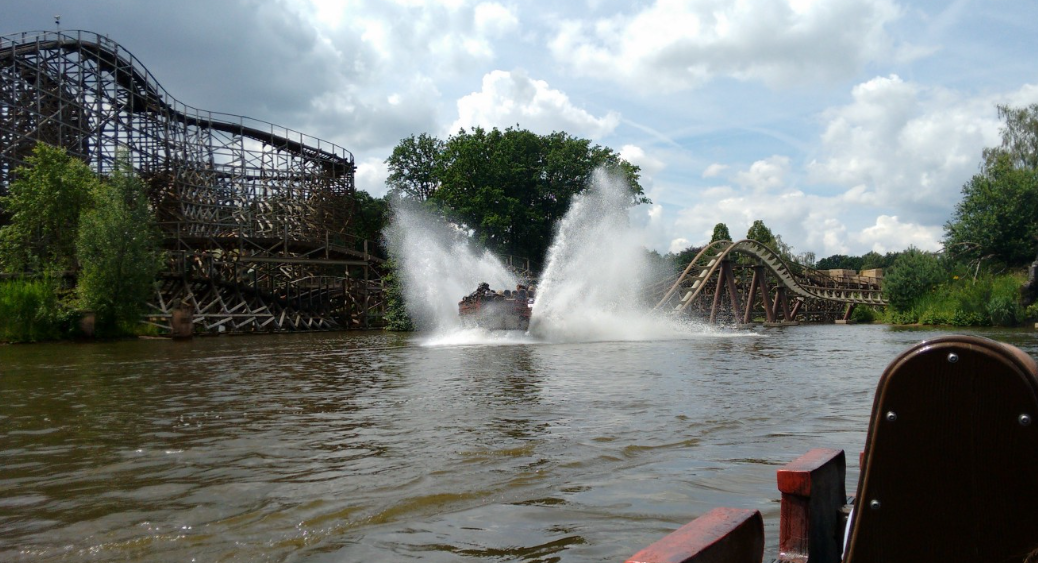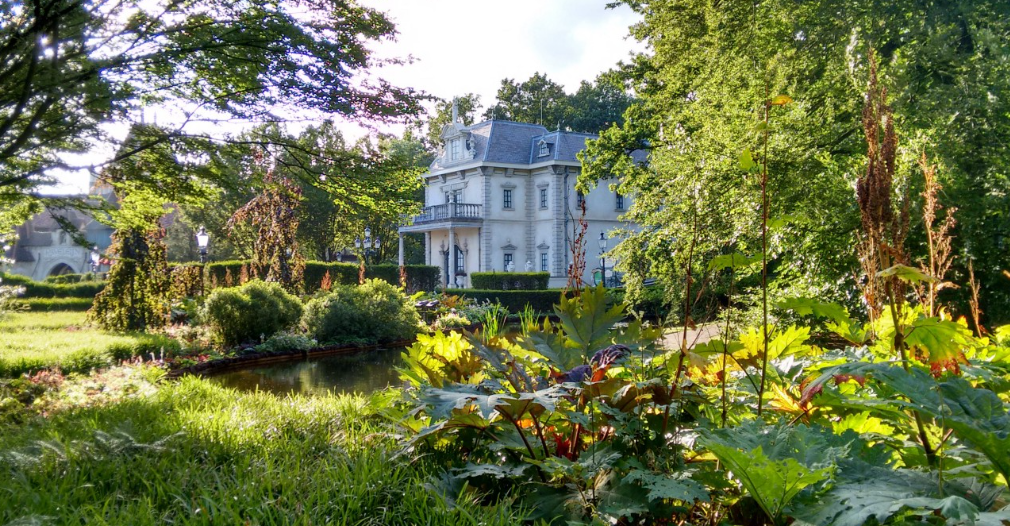When discussing the relative quality of theme parks Efteling, people still usually refer to Disney as the gold standard against which everything else must be measured. That can be useful up to a point — Disney’s famous attention to detail was, until recently, unparalleled, and still informs the industry as a whole — but it’s easy to take such thinking too far. Assume that Disney’s way of doing things must therefore be the “right” way.
I’m guilty of this myself; the only theme parks I’ve visited regularly over. The last two decades are Disney’s, and it’s fair to say my expectations. What makes a good park have been formed around a mindset and creative culture that’s very particular to the Walt Disney Company.
So it was both a surprise and a delight to have those expectations completely overturned by Efteling.
It’s a park that had been languishing on my to-do list for years. Those in the know have always spoken very highly of it and their numbers have been growing. As it pursues an ambitious plan to establish itself as a top-tier, internationally recognised resort. It’s a plan that seems to be working, thanks to a series of new attractions and an online advertising campaign that puts Disneyland Paris’s marketing department to shame. (Seriously, take a look at this video and tell me it’s not one of the best theme park adverts you’ve ever seen).
No less a figure than Tony Baxter, the current godfather of theme park design, a fan, as he told Theme Park Insider:
‘I think they’ve been more successful than any other park I know of, other than Disney, of developing their own IP, their own rides… I’ve gone there many times, and I’ve learned a lot from them.’
That’s not the sort of endorsement you can easily overlook. So when I finally got the chance to visit the park with my family this year, I was quick to take it. Now, like Tony Baxter and countless others, I’m in the know. I just wish I’d known a lot sooner.
Founded in 1950 by filmmaker Peter Reijnders and illustrator Anton Pieck, Efteling was originally no more than an outdoor pursuits and recreation ground in the forest surrounding the small town of Kaatsheuvel. That changed in 1952 however, with the construction of the Fairytale Forest (Sprookjesbos). Which brought a number of the world’s most famous folk tales to life. The park has grown and developed ever since, but its identity remains firmly rooted in its origins — this is a park of fairytales and folklore. That makes the most of what must be one of the most beautiful natural settings for any theme park in the world.
It’s also big. Really big, which came as a surprise. At almost 500 acres it’s about twice the size of the original Disneyland in California. We were there for two full days and didn’t see everything. Admittedly, it can be hard to move with a purpose when you’re in a big family group (me, my wife, our two children, their uncle and both sets of grandparents), but Efteling doesn’t encourage a great sense of urgency anyway. It isn’t set up for it.
I’ve written before about the genius of the Disneyland Park’s design. Which carefully channels you from one place to another without you noticing. There’s always a visual stimulus to keep you moving, a clear goal to head for. Efteling’s layout is more organic, having grown piece by piece over the course of six decades. So doesn’t allow for such precision. Sightlines and kinetics are less in-your-face than at Disney. As many of the attractions — indeed, some entire areas of the park — are sequestered amongst the woodland.
Consequently, moving from place to place takes on the feel of a pleasantly aimless stroll. This is a theme park with the emphasis on “park”.
It also means there’s no real delineation between the four “realms” outlined on the park map. In reality, Efteling is one big collage of attractions; a little abstract at times (why, for example, is Vogel Rok at the opposite end of the park to Fata Morgana, when both attractions are inspired by the Tales of the 1001 Nights?) but generally unified in artistic style and vision.
That vision stems directly from the work of Anton Pieck. Who established the park’s visual style when he created the first installations for the Fairytale Forest. Went on to oversee the park’s artistic direction for the following 22 years. He created a nostalgic, rural aesthetic with whimsical flourishes, built on a diminutive scale. It’s less overtly fantastical than the style Disney would later adopt for its Fantasylands; less ornamental and more lived-in.
These early design principles have dictated the look of almost every other area of the park in the years since. It’s why we find the crumbling Indo-Chinese inflected palace of Dreamflight (Droomvlucht). The medieval fortress of Raveleijn and the French renaissance manor house of Villa Volta all rubbing shoulders comfortably. Even large scale modern rides like Baron 1898 are careful not to overwhelm Pieck’s style — its artfully chosen colour scheme and picturesque mine buildings are an extension of the same aesthetic. I can imagine the park’s designers, when embarking on a new project, asking themselves not “What would Anton do?” but “How would Anton do it?”, which is a far more useful question, frankly.
This respect for its own history provides Efteling with a solid foundation. Which to innovate and diversify without losing its essential identity. There have been a few missed steps along the way, of course; Python, an unthemed Vekoma looping coaster, and Carnaval Festival, an inexplicable Small World knockoff, feel like responses to trends in other parks, but I got the strong impression that Efteling is led as much by its creative choices as its financial ones. In this era of Frozen Maelstroms and Guardians of the Galaxy overlays, that’s a good impression to have.
But a theme park is nothing without its attractions, so how does Efteling stack up? As I’ve already mentioned, I didn’t get the chance to see everything, so there will be some significant gaps in my account. I didn’t set foot in the Leaf Peoples’ Village (Volk Van Laaf), for example, or see the park’s headline live show Raveleijn, which looks absolutely spectacular from the promotional clips I’ve seen. (Stunt horses! On fire!) What follows, therefore, is a sort of highlight reel of the most noteworthy and memorable things I experienced.
Pride of place has to go to the Fairytale Forest. With two young children in tow, it was always going to feature heavily in our trip, but I hadn’t expected to enjoy it half as much as I did. We spent half a day here and could have happily stayed longer.
Essentially a park within the park, the Fairytale Forest is screened from the outside world by its own patch of woodland, and functions as a gigantic walk-through attraction. Visitors explore its meandering paths and hidden clearings in search of a series of animated displays representing the world’s most enduring fairytales (plus a few I’d never heard of). Our visit took on the playful feel of a treasure hunt, as we tracked down one tale after another, and I was impressed by the huge variety of techniques used in the displays. The Little Mermaid is a simple statue surrounded by fountains, for example, while the Indian Water Lillies (a tale written by Queen Fabiola of Belgium) is a brilliantly silly animatronic musical show in an underground theatre.
Several of the paths culminate in Herald Square (Herautenplein), a secluded formal garden that is home to probably the hardest working attraction in the whole park: Donkey Lift Your Tail. At first glance just a statue on a large plinth, the donkey can be persuaded (with the aid of a 50 cent coin) to raise his tail and excrete a commemorative Efteling gold medallion. It’s about as far from the Disney mindset as it’s possible to get, but it’s a strangely compelling experience. We did it four times ourselves and, in the fifteen minutes. Or so we hung around to watch, other people pumped at least 20 Euros into the thing. It must make a fortune.
There isn’t room here to take you through all the best bits of the Fairytale Forest. But I don’t think I’m exaggerating when I say that, by the time we left. It had become one of my favourite theme park lands, ever.
One of the park’s newest and most celebrated attractions is Baron 1898. The B&M dive coaster that set tongues wagging last year with its unprecedented theming. There’s no denying this is one of the most photogenic coasters anywhere in the world. This attention to detail is in evidence throughout the ride’s two pre-shows and cavernous load station.
Which mix immersive sets with projection mapping, lighting effects and an impressive audio-animatronic figure to set up our story: Baron Gustave Hooghmoed has hired us to venture below ground in search of buried riches, but an ancient supernatural force in the shape of the spectral White Women warns us to turn back. It has all the makings of a world-beater, and it so very nearly. This is where I have to diverge from theme park fan orthodoxy and admit. I was a bit disappointed with Baron 1898.
Perhaps it’s because I’m not a huge proponent of dive coasters in general. With the exception of Sheikra at Busch Gardens, Tampa, they’re all one-trick ponies; a few seconds’ intensity followed by not a whole lot, and Baron 1898 suffers the same flaw, failing to deliver on its early promises. All that rich theming and backstory disappear after the first drop, and we’re treated to a couple of inversions and some perfunctory turns before returning to the station.
It’s just crying out for a second, indoor show section, no matter how short, to resolve the story it worked so hard to set up. It’s fun, but I actually had a better time on Vogel Rok, the Vekoma indoor coaster that rides an awful lot like the Floridian version of Space Mountain, with the added bonus of random green lasers, flocks of giant birds and, inexplicably, a huge glowing snake that swallows the train at one point. It felt like riding through the cover artwork for a ’70s prog rock album: cheesy in all the right ways. I laughed the whole way round.
More fun still is The Flying Dutchman (De Vliegende Hollander), a water coaster/dark ride hybrid that stands out as one of the most richly themed rides in the park. The exterior, queue and loading dock are a match for Disney’s best work, as riders venture into the house of ill-fated sea captain Willem van der Decken, then through a hidden smugglers’ tunnel into a dockside tavern, all to the tune of a real earworm of a sea shanty.
The ride’s opening scenes are also suitably atmospheric, as the boats leave the moonlit harbour for fogbound seas, ready for an encounter with the titular ghost ship. The last few interior scenes add the twist of a few physical thrills, but sacrifice much of the atmosphere and detail in the process, while the final, outdoor section of the ride is an unthemed steel coaster. It’s fun, if a little too light on genuine white knuckle moments, and the final splashdown into the middle of the lake is satisfying for riders and spectators alike.
Far more intense is George and the Dragon (Joris en de Draak), the enormous racing wooden coaster that dominates the lake’s opposite shore. As the name suggests, it boasts a medieval sword & sorcery motif, which feels a little perfunctory, although the ride itself really impresses — I’ve relatively little experience of wooden coasters, but this is probably the best I’ve ever ridden. It feels excitingly out of control, and packs in plenty of airtime hills, rattling turns and racing straights. A world away from the smooth comfort of The Flying Dutchman, but that’s rather the point.
Add Python, the aforementioned Vekoma corkscrew, to the line-up, and it’s clear that Efteling boasts a pretty solid roster of coasters. But there is one surprising oversight — with the exception of a small Bobsleigh Coaster, there’s nothing that doesn’t require a fairly steep height restriction, which meant my eldest boy (who’s nearly five) couldn’t ride anything more thrilling than the Polka Marina — a fun but unexceptional fairground-style flat ride. The park badly needs a proper family coaster — an equivalent to Disney’s Big Thunder Mountain, or The Dragon at Legoland — to round out its offerings.
Not that there aren’t plenty of other family rides on offer, of course. Dreamflight (Droomvlucht) frequently appears in shortlists of the world’s greatest dark rides, thanks to its ambitious scale and mystical atmosphere. Consequently, it was one of the very few attractions I knew anything about prior to my visit, and I’m happy to report that it didn’t disappoint.
Suspended ride vehicles ferry guests through astral realms and fairy glades, past floating castles and into the depths of a troll forest. The most striking thing about these scenes is their sheer size — they’re huge, extending to several stories in height, and crammed full of sumptuous levels of detail. The ride contains one million artificial flowers, and that’s not counting the full-size trees, waterfalls, ponds, woodland creatures, elves, fairies, etc.
The animation of many of the figures is pretty basic, but when they’re all moving together in such numbers you hardly notice. I do have to question the art direction in some cases though; who decided to give all the fairies the same face with its expression of open-mouthed shock? And why do the elves look like mermen? These are minor niggles, and I easily dismissed them, especially when the ride reached its surprising, free-wheeling finale. It’s a delightful experience, and one that should feature on any theme park fan’s bucket list.
Almost next door to Dreamflight is Villa Volta, the world’s first Vekoma Madhouse. It’s a ride system that’s become pretty commonplace in theme parks around. The world over the past 20 years (if you’ve ridden Hex at Alton Towers. You know what to expect), but only because Villa Volta nailed the concept first. Part haunted house, part giant optical illusion, the ride simulates an entire banqueting hall full of people being spun upside down to the accompaniment of a sweeping cinematic soundtrack by Ruud Bos. Who penned several of the park’s most memorable signature tunes.
His work can also be heard on Fata Morgana, an expansive indoor boat ride that owes a significant debt to Pirates of the Caribbean, though it stands up remarkably well in its own right.
Its animatronic figures are inevitably less fluid and expressive than their Disney counterparts. But the setting of a fantastical Middle Eastern kingdom is brilliantly realised, from the grubby back streets and bustling market. The opulence of the Sultan’s palace and the hidden treasure room, guarded by an enormous genie. The environments are large, layered and rich in atmosphere. There’s a real sense of mystery and enchantment to the whole thing. The ride is even more impressive from the outside, as its minarets and domes command a superb view across Efteling’s main lake, making it a superb backdrop to the nightly Aquanura fountain show.
Finally, I can’t finish this review without at least a quick mention of the other surprise highlight of the trip: the food. I’d been expecting adequate but overpriced fare — standard theme park food, in other words — but soon found myself seeking out snack stands and restaurants, trying to sample as many different items as I could. There’s a good, if not exceptional, variety on offer, and a lot of it freshly prepared on the spot. Eating soon became an attraction in itself.
Five minutes after first setting foot in the park, for instance, I found myself wolfing down an oliebol — a spherical doughnut the size of a tennis ball, coated in icing sugar and still piping hot from the fryer.
It was the same wherever we went. A barbecue pit set up at the foot of Python, selling enormous flame grilled burgers cooked to order. We had kibbling (deep fried fish nuggets) and chips at The Mermaid (De Meermin), a tiny fish counter located behind Baron 1898. It was all cooked while we waited, and cost no more than we would have paid for fish and chips at home.
And again at ‘t Poffertje, a bistro-style eatery opposite the Steam Carousel (Stoomcarrousel). Poffertjes, for the uninitiated, are miniature pancakes, usually topped with butter and sugar, and the Dutch go nuts for them. ‘T Poffertje clearly banks on this, as its tiny kitchen is on full display. So even people passing by outside can see the huge cooling racks full of freshly fried pancakes. We ate ours on the terrace and watched the steam train chug past.
But our biggest meal of the trip was at Polle’s Kitchen (Polle’s Keuken). A full table service pancake restaurant themed to a medieval kitchen in the kingdom of Pardoes. The fantasy realm in which Efteling’s stable of in-house characters reside. A bank of ovens stands near the centre of the room, beneath an enormous multi-level revolving contraption, loaded with food and cooking utensils.
More utensils hang from leather drive belts suspended above some of the tables. The wait staff are all dressed as chefs’ assistants, to complete the theme. Every twenty minutes or so, the magic powering the kitchen runs out of control, the ovens vent steam. The revolving platforms above it spin faster and faster, and the music loop speeds up to match it. It’s welcoming and understated — fun, without being distracting.
English language menus are easily available, and feature a run-down of the Pardoes characters on the reverse. Which was handy as a couple of them were meeting and greeting in the square outside.
As at ‘t Poffertje, we could see our pancakes prepared. The quality as good as any I’ve had in the Netherlands to date. Better yet, the price was exactly what we would have paid at a normal restaurant. Our boys particularly well served by the “Pimp Your Own Heart Pancake” menu. They each a plain heart shaped pancake and half a dozen pots of assorted sweet toppings. So they could customise their meal.
They also got a drink and a “surprise”, to collected at the bar at the rear of the restaurant after their meal. I assumed it would something like a badge or a colouring book. So amazed when they offered their choice of Pardoes action figures instead. They quickly became two of my boys’ favourite souvenirs and still played with now, more than two months later. Tony Baxter wasn’t joking when he said this was a park that knew how to craft its own IPs.
Oh, and did I mention that the “Pimp Your Own Heart Pancake” menu cost less than eight Euros? Remember that the next time you’re queueing for a lukewarm burger in the Walt Disney Studios Park.
This review could easily double in length before I cover all the things I think are worth discussing, (the on-site accommodation, the resort staff, the merchandise, etc.). So I’ll have to content myself with saying that Efteling has slotted itself quite comfortably. Into my top three favourite theme parks worldwide, alongside Disneyland Paris and Tokyo DisneySea. It’s such a pleasure to genuinely surprised by a park. To discover a whole new history and culture to explore.
Best of all is the sense that things are only going to get better going forward. As the park continues to innovate and expand. Next year will see the opening of the park’s most ambitious attraction yet — Symbolica. An interactive trackless dark ride featuring the Pardoes characters. If it lives up to its potential, the park will truly be able to count itself in the big leagues. The goal of attracting five million visitors per year by 2020 should be a foregone conclusion.
I can’t wait to see where they choose to go from there.
For more insight into Efteling, be sure to check out Le Parcorama and Efteling UK websites.





